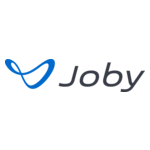John Gruber / Daring Fireball:
— On Saturday, Apple announced a broad, wide-ranging, and complex set of new policies establishing their intended compliance with the European Union’s Digital Markets Act, which comes into effect March 7.
There is a lot to remark upon and numerous remaining questions, but my favorite take was from Sebastiaan de With on Twitter/X, the day before any of this was announced.

After quipping “Oh god please no” to a screenshot of the phrase “Spotify also wants to roll out alternate app stores”, de With had this conversation:
de With:
The EU is once again solving absolutely no problems and making everything worse in tech. I gotta say, they are if anything highly consistent.
“Anton”:
Overly powerful, rent-seeking gatekeepers seem like a problem.
de With:
I love that I can’t tell if you are talking about the EU or Apple in this case.
My second-favorite take, from that same thread, was this from Max Rovensky:
DMA is not pro-consumer.
It’s anti-big-business.
Those tend to coincide sometimes, which makes it an easy sell for the general public, but do actually read the DMA, it’s quite interesting.
I’d go slightly further and describe the DMA as anti-U.S.-big-business, because as far as I can tell, nothing in the DMA adversely affects or even annoys any European tech companies. There are aspects of it that seem written specifically for Spotify, in fact.
But Rovensky’s framing captures the dichotomy. Anti-big-business regulation and pro-consumer results often do go hand-in-hand, but the DMA exposes the fissures. I do not think the DMA is going to change much, if anything at all, for the better for iOS users in the E.U. (Or for non-iOS users in the EU, for that matter.) And much like the GDPR’s website cookie regulations, I think if it has any practical effect, it’ll be to make things worse for users. Whether these options are better for developers seems less clear.
I’ve often said that Apple’s priorities are consistent: Apple’s own needs first, users second, developers third. The European Commission’s priorities put developers first, users second, and “gatekeepers” a distant third. The DMA prescribes not a win-win-win framework, but a win-win-lose one.
Apple is proud, stubborn, arrogant, controlling, and convinced it has the best interests of its customers in mind.
The European Commission is proud, stubborn, arrogant, controlling, and convinced it has the best interests of its citizens in mind.
Ever since this collision over the DMA seemed inevitable, starting about two years ago, I’ve been trying to imagine how it would turn out. And each time, I start by asking: Which side is smarter? My money has been on Apple. Yesterday’s announcements, I think, show why.
APPLE’S PROPOSED CHANGES
It’s really hard to summarize everything Apple announced yesterday, but I’ll try. Start with the main Apple Newsroom press release, “Apple Announces Changes to iOS, Safari, and the App Store in the European Union”:
“The changes we’re announcing today comply with the Digital Markets Act’s requirements in the European Union, while helping to protect EU users from the unavoidable increased privacy and security threats this regulation brings. Our priority remains creating the best, most secure possible experience for our users in the EU and around the world,” said Phil Schiller, Apple Fellow. “Developers can now learn about the new tools and terms available for alternative app distribution and alternative payment processing, new capabilities for alternative browser engines and contactless payments, and more. Importantly, developers can choose to remain on the same business terms in place today if they prefer.”
Schiller is the only Apple executive quoted in the press release, and to my ear, his writing hand is all over the entire announcement. Apple was quite clear before the DMA was put into law that they considered mandatory sideloading on iOS a bad idea for users, and their announcement yesterday doesn’t back down an inch from still declaring it a bad idea.
Apple has also argued, consistently, that they seek to monetize third-party development for the iOS platform, and that being forced to change from their current system — (a) all apps must come from the App Store; (b) developers never pay anything for the distribution of free apps; (c) paid apps and in-app-purchases for digital content consumed in-app must go through Apple’s In-App Payments system that automates Apple’s 30/15 percent commissions — would greatly complicate how they monetize the platform. And now Apple has revealed a greatly complicated set of rules and policies for iPhone apps in the EU.
MG Siegler has a great — and fun — post dissecting Apple’s press release line-by-line. Siegler concludes:
I’m honestly not sure I can recall a press release dripping with such disdain. Apple may even have a point in many of the points above, but the framing of it would just seem to ensure that Apple is going to continue to be at war with the EU over all of this and now undoubtedly more. Typically, if you’re going to make some changes and consider the matter closed, you don’t do so while emphatically shoving your middle fingers in the air.
Some of these changes do seem good and useful, but most simply seem like convoluted changes to ensure the status quo actually doesn’t change much, if at all. Just remember that, “importantly, developers can choose to remain on the same business terms in place today if they prefer.” What do you think Apple prefers?
The puzzle Apple attempted to solve was creating a framework of new policies — and over 600 new developer APIs to enable those policies — to comply with the DMA, while keeping the path of least resistance and risk for developers the status quo: Apple’s own App Store as it is.
So the first option for developers is to do nothing — to stay in Apple’s App Store, exclusively, under the existing terms. (Apple made a few announcements yesterday that are effective worldwide, not merely in the EU, such as changes regarding the rules for streaming game services, mini-games, and mini-apps. For the sake of brevity — well, attempted brevity — I’m focusing on E.U.-specific changes related to DMA compliance.)
One point of confusion is that some aspects of Apple’s proposed DMA compliance apply to the App Store across all platforms (iPhone, iPad, Mac, TV, Watch, and soon, Vision), but other aspects are specific to the iOS platform — which is to say, only the iPhone. Third-party app marketplaces1 and web browsers using non-WebKit rendering engines are only available on iOS specifically, meaning they are iPhone-only,2 and not available for iPadOS. Apple’s main press release yesterday breaks out iOS changes and App Store changes separately, but on my first read did not make clear that the iOS changes did not apply to iPadOS.3
Here’s my summary of the options available to developers in the EU, under Apple’s proposal:
- Stay in App Store under the current (pre-DMA) rules, exclusively. Developers that take this option:
- Are not permitted to use any of the new business termsavailable in the EU, but new iOS platform options for the EU, such as alternate browser engines, are allowed. (Because they are required to be allowed.)
- Because nothing business-related changes under this option, the existing worldwide rules apply for paid apps, subscriptions, and in-app purchases (IAP), including the 30/15 percent commission to Apple and a requirement that apps exclusively use Apple’s App Store payments system.
- The Core Technology Fee (CTF) is not collected, because the business terms haven’t changed. (See below re: the CTF.)
- Opt in to the new EU rules (all sub-options available under this choice require paying the Core Technology Fee for each app with over 1 million downloads in the EU):
- After opting in to the new EU rules, developers can choose to remain in the App Store, and:
- Use Apple’s App Store payments system: 20/13 percent commission + CTF paid to Apple automatically.
- Use a custom in-app payments system (e.g. Stripe): 17/10 percent commission + CTF paid to Apple.
- Use external links from inside apps to the web for payments and subscriptions: 17/10 percent + CTF paid to Apple.
- The latter two options — using custom payment processing and/or external links to the web — are similar to the announced-last-week External Payment Link entitlement policy, regarding the developer’s obligation to track these payments, report sales to Apple monthly, and submit to audits by Apple to ensure compliance.
- Distribute apps in one or more third-party marketplaces:
- No option to use Apple’s App Store payment processing, because the apps aren’t coming from the App Store.
- The only money due to Apple is the Core Technology Fee — there is no commission percentage on in-app transactions or links to the web.
Under option (2) — the catch-all for opting in to the new rules available in the EU — the sub-options are not mutually exclusive. Developers that opt in to the new EU rules can have (or keep) apps in the App Store and distribute those same apps, or different apps, via third-party app marketplaces. Or they can stay in the App Store exclusively (under the new business terms, with lower commissions but also the CTF), or they can distribute exclusively via app marketplaces.
Only options (1) and (2) are exclusive. However, once a developer opts in to the new EU rules, that decision is irrevocable. Quoting from the Q&A section of Apple’s “Update on Apps Distributed in the European Union” document:
Developers who adopt the new business terms at any time will not be able to switch back to Apple’s existing business terms for their EU apps. Apple will continue to give developers advance notice of changes to our terms, so they can make informed choices about their businesses moving forward.
(That entire FAQ section is a good summary and worth reading.)
THE CORE TECHNOLOGY FEE
Apple’s description of the CTF:
The Core Technology Fee (CTF) reflects Apple’s investment in the tools, technology, and services that enable developers to build and share their apps with Apple users. That includes more than 250,000 APIs, TestFlight, Xcode, and so much more. These tools create a lot of value for developers, whether or not they share their apps on the App Store.
The CTF only applies to developers who adopt the new terms for alternative distribution and payment processing — and whose apps reach exceptional scale. With membership in the Apple Developer Program, eligible developers on the new business terms get a free one million first annual installs per year for each of their apps in the EU. See terms for more details. Under the new business terms for EU apps, Apple estimates that less than 1% of developers would pay a Core Technology Fee.
Apple’s description is clear on the following point, but it’s worth reiterating: the CTF only applies to downloads above 1 million, like a marginal tax rate. So a developer whose app goes from 1,000,000 EU user downloads to 1,000,001 will only owe Apple €0.50 in Core Technology Fees. The CTF is recurring each year however, and updates count as downloads. Installing the same app on multiple devices does not count as multiple installations though.4 The CTF is calculated per user, per app, per year. (Apple has a CTF calculatordevelopers can use to game scenarios of prices, distribution method, and download counts.)
In plain language, the DMA demands that Apple unbundle its monetization for the App Store from its monetization of the iOS platform. Apple’s existing, purely commission-based, monetization for iOS apps implicitly bundles together the value provided from the App Store and iOS.
So under option (1) — where developers choose the existing rules for App Store distribution, including App Store exclusivity — nothing changes and Apple collects its 30/15 percent commissions from App Store transactions.
But under option (2) — where developers opt in to the new EU rules — Apple’s monetization for the App Store is severed from its monetization for the iOS platform itself. That’s why the commission fees under the new EU rules are reduced to 20/13 percent for apps distributed through the App Store that use the App Store payment system, and 17/10 percent for apps distributed through the App Store that use custom payment processing. Effectively, Apple is saying that their fair share of App Store distribution is 17/10 percent, and that Apple’s own App Store payment processing is worth an additional 3 percent. (3 percent is almost indisputably a fair estimate for the cost of payment processing alone.)
And, that’s why apps distributed outside the App Store will only pay Apple the CTF, with no commission on sales. The commissions under the new EU rules are only for the App Store, so apps from marketplaces don’t pay them. The Core Technology Fee is how Apple proposes monetizing the value provided by iOS itself.
All developers who opt in to the new EU rules are subject to the CTF. No developers who remain in the App Store under existing policies are subject to the CTF.
MARKETPLACE APPS ARE THE ONLY DISTRIBUTION OUTSIDE THE APP STORE
Third-party marketplace apps are the only way for developers to distribute apps in the EU outside the App Store. Apple’s proposal has no option for direct downloads of apps from developer websites. Apple has rules for who can become an app marketplace. You have to be a company, not an individual. You must “provide Apple a stand-by letter of credit from an A-rated (or equivalent by S&P, Fitch, or Moody’s) financial Institution of €1,000,000 to establish adequate financial means in order to guarantee support for your developers and users.” And more. In short, the qualifications aren’t trivial, but nor are they overly complicated.
But marketplace apps must be real “stores”. A marketplace can decide to exclusively distribute apps from a certain category — like games — but must be open to submissions from any developer in that same category. Company XYZ can’t create a marketplace that only distributes XYZ’s own apps. That’s not a proper category. Nor would Apple consider to be a proper category something like, say, “Apps from companies founded by Harvard dropouts whose origins were depicted in fun movies by Aaron Sorkin.”
One key restriction for developers who wish to distribute through multiple stores (including Apple’s App Store): an installation from one store cannot overwrite an existing installation of the same app from another store. The user must manually delete the installation from the old store first, then re-install the app from the other store. Apple claims — reasonably, perhaps — that this restriction is because they don’t know whether a fresh installation from a different store will preserve the data from the app installed via the previous store.
But this also means that if, say, Meta starts distributing their apps through a third-party marketplace (perhaps their own Meta Store), and wishes to encourage iOS users to switch from App Store installations to installations from the Meta Store, each user who does so must delete their existing installations of Meta’s apps before installing the new ones.
Third-party marketplace apps — the actual app store apps — will not be permitted in Apple’s App Store. To install a marketplace app — and third-party app marketplaces will be apps themselves — users must go to the marketplace app’s website. Safari (and other web browsers that adopt new APIs) will offer to install marketplace apps after confirmation from the user that they really want to install it. That confirmation scaresheet and the subsequent installation is provided by the system.
Part of what makes the DMA a terrible law (in this writer’s estimation) is its ambiguity and inscrutable language. It’s completely unclear whether Apple’s proposal to only allow distribution of apps outside the App Store through marketplace apps is compliant. Many proponents of the DMA have been under the conviction that the DMA mandates gatekeeper platforms like iOS to permit direct downloads of apps from the web (like on PCs and Macs). Here’s Article 6, Section 4 of the DMA, boldface all-caps emphasis added:
4. The gatekeeper shall allow and technically enable the installation and effective use of third-party software applications OR software application stores using, or interoperating with, its operating system and allow those software applications OR software application stores to be accessed by means other than the relevant core platform services of that gatekeeper. The gatekeeper shall, where applicable, not prevent the downloaded third-party software applications OR software application stores from prompting end users to decide whether they want to set that downloaded software application OR software application store as their default. The gatekeeper shall technically enable end users who decide to set that downloaded software application OR software application store as their default to carry out that change easily.
By Apple’s interpretation, all of those or’s would be and/or’s or and’s if the DMA demanded that iOS support both third-party marketplaces and direct installation of individual apps and games. See below regarding the uncertainty of this interpretation.
— Techmeme














